|
Chorale Melodies used in Bach's Vocal Works
O Lamm Gottes, unschuldig |
|
Melody & Text | Use of the CM by Bach | Use of the CM by other composers |
| |
|
Melody & Text: |
|
"O Lamm Gottes, unschuldig" (O Lamb of God, innocent) is an early Lutheran hymn, with text and melody attributed to Nikolaus Decius. Originally intended as a German hymn instead of the Latin Agnus Dei, it was used rather as a hymn for Passiontide. In both meanings, the hymn has often been set to music, prominently as the cantus firmus in the opening chorus of J.S. Bach's St Matthew Passion (BWV 244). It is included in most German hymnals.
The words of the Choral are the first stanza of N. Decius’ translation of the “Agnus Dei qui tollis peccata mundi.” Until the 18th century, the hymn "O Lamm Gottes, unschuldig" was printed in hymnals without mentioning an author. Philipp Julius Rehtmeyer (de) presented in his historical Braunschweigische Kirchen-Historie a Latin report from 1600, which called N. Decius as the author of text and melody of "O Lamm Gottes, unschuldig" and "Allein Gott in der Höh sei Ehr". A medieval melody may have been the model for the tune. The creation of hymns by N. Decius is dated 1522-1523, in the early Reformation, before Martin Luther's first hymns, published in 1524 in the first Lutheran hymnal.
The song was first printed in Low German in Joachim Slüter (de)'s Geystlyke leder in Rostock in 1531. The first print in High German appeared in in Valentin S. Schumann’s Geistliche lieder auffs new gebessert und gemehrt (Leipzig, 1539). It was distributed in German-speaking regions.
The melody, “O Lamm Gottes unschuldig,” was composed or adapted by N. Decius (von Hofe or Hovesch) for his translation of the “Agnus Dei.” The tune was published, with the hymn, in Anton Corvinus’ Christliche Kirchen-Ordnung (Erfurt, 1542), issued, with a Preface by Elisabeth Duchess of Brunswick-Luneburg, for the use of the Principalities of Calenberg and Gottingen, of which she was Regent. The melody appeared with the text first in Johann Spangenberg (de)s hymnal Kirchengesenge Deudtsch (Magdeburg, 1545), but it had appeared in a slightly different version a few years earlier in a Strasbourg hymnal.
Like in the Latin model, the Lamb of God is called three times, twice asking for mercy, the third time for peace. In all early prints, "O Lamm Gottes, unschuldig" is titled Das Agnus Dei Deutsch (The Agnus Dei in German), indicating that it was supposed to take the position of the Agnus Dei during the Abendmahl (communion). This function was soon taken by Luther's "Christe, du Lamm Gottes", while "O Lamm Gottes, unschuldig", which adds the memory of Christ's Passion, was used as a hymn for Passiontide.
The hymn was included in the Evangelisches Kirchengesangbuch (EKG) of 1950 as a Passion song, EKG 55, with two slightly different melodies, called northern ("norddeutsche") and southern ("süddeutsche") version.
The hymn appeared in 1616 first in a Catholic hymnal, in Paderborn, then in the Groß Catholisch Gesangbuch by David Gregor Corner. It was included in 1938 as "O du Lamm Gottes unschuldig" in the collection Kirchenlied as the only Agnus Dei song.
English translations of the Hymn are noted in the Dictionary of Hymnology, pp. 31, 1550. The translation of Catherine Winkworth, waspublished in 1863 as No. 46 in her Chorale Book for England.
An ecumenical group, Arbeitsgemeinschaft für ökumenisches Liedgut (de), worked in 1973 on a common version, which appeared in the Catholic Gotteslob in 1975 and in the Protestant Evangelisches Gesangbuch (EG 190.1). In the current Gotteslob the song is GL 203. In all these hymnals, the song was again grouped as an Agnus Dei song.
Source: Wikipedia (February 4, 2018) with asdditions by Aryeh Oron (October 2018) |
|
J.S. Bach used the hymn as a cantus firmus in the opening movement Kommt, ihr Töchter, helft mir klagen of his St Matthew Passion (BWV 244). He wrote it, without words, in red ink in the middle between the first choir on top of the page and the second at the bottom. J.S. Bach also composed chorale preludes on the hymn, one part of the Great Eighteen Chorale Preludes as BWV 656, and BWV 1085, found in the Neumeister Collection. He wrote a four-part setting, BWV 401. |
|
There are two forms of the ancient melody of the “Agnus Dei” adapted by Nikolaus Decius to his translation of that hymn: the original published in 1542, and a later version published in 1545. The latter is in use particularly in North Germany and Bach uses it with textual variations, chiefly in the fourth phrase of the tune.
The melody occurs in the “St Matthew Passion,” No. 1. There is a harmonisation of it in the Choralgesange, No. 285. Organ Works, BWV 618, BWV 656. Bach generally follows a reconstruction of the melody in Johann Spangenberg’s Kirchengesenge Deudtsch (Magdeburg, 1545). In the Choral Prelude, BWV 656, his melodic text approximates to a reconstruction of the 1545 version found in an Eisleben Hymn-book of 1598. |
|
Melody 1: Zahn 4361a
Composer: Nikolaus Decius (1523 / 1531/ 1542) |
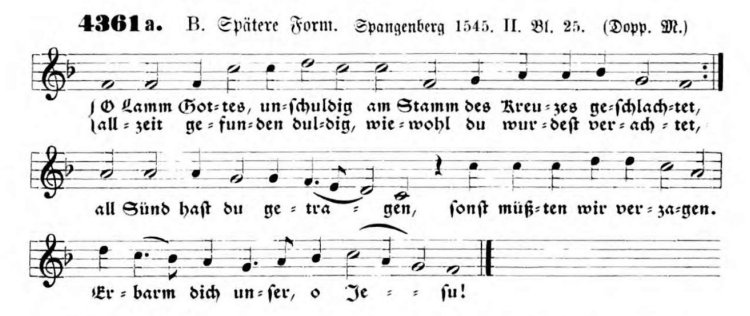 |
|
Melody 2: Zahn 4361b
Composer: Nikolaus Decius (1523 / 1531, 1545) |
 |
|
Text: O Lamm Gottes unschuldig (NLGB 79; GH 104; EKG 55)
Author: Nikolaus Decius (created 1522-1523; first published 1531), metrical version of Agnus Dei (Lamb of God) |
|
Hymnal versions Bach may have known: |
|
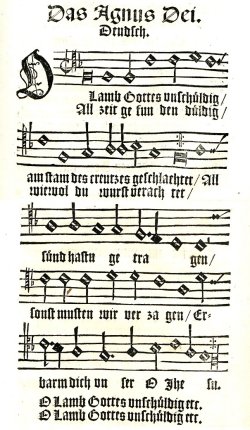
|
|
O Lamm Gottes, unschuldig , in: Kirchengesenge Deudtsch/ auff die Sontage und fürnemliche Feste/ durchs gantze jar (Magdeburg 1545) |
|
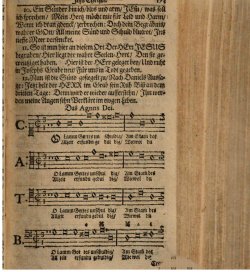
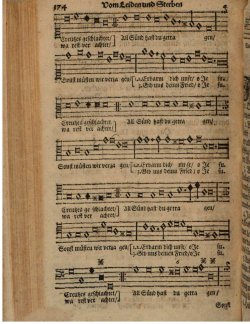
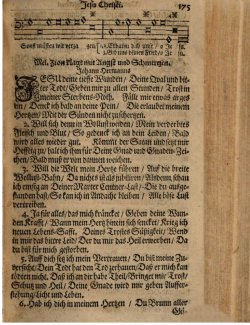
|
|
Melody & text of O Lamm Gottes, unschuldig (NLGB 79) from the Neu Leipziger Gesangbuch,(1682), pp 173-178 |
|
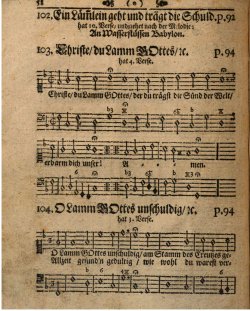
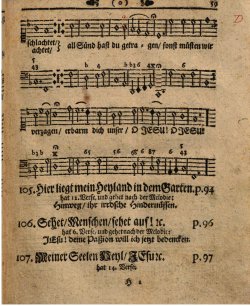
|
|
Melody & verse 1 of O Lamm Gottes, unschuldig (GH 104) from the Gotha Hymnal (1715), pp 58-59 |
| |
| |
|
Use of the Chorale Melody by Bach: |
|
Melody 1: |
|
Text: O Lamm Gottes unschuldig |
|
Chorus Kommt, Ihr Tochter, Helft Mir Klagen (Mvt. 1) from Matthäus-Passion BWV 244 (1727) (verse 1), |
|
Form. The Choral (Soprano ripieno) is an independent strand or ornament of the Double Chorus (Two Orchestras, each 2 Fl., 2 Ob., Strings, Organ, and Continuo). |
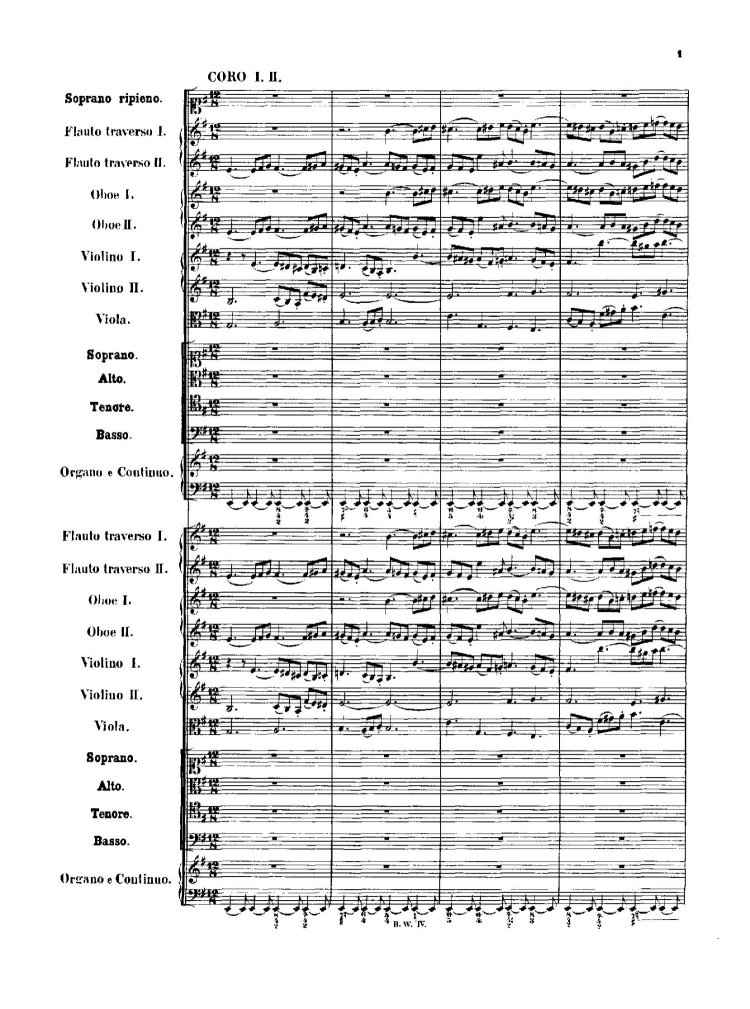
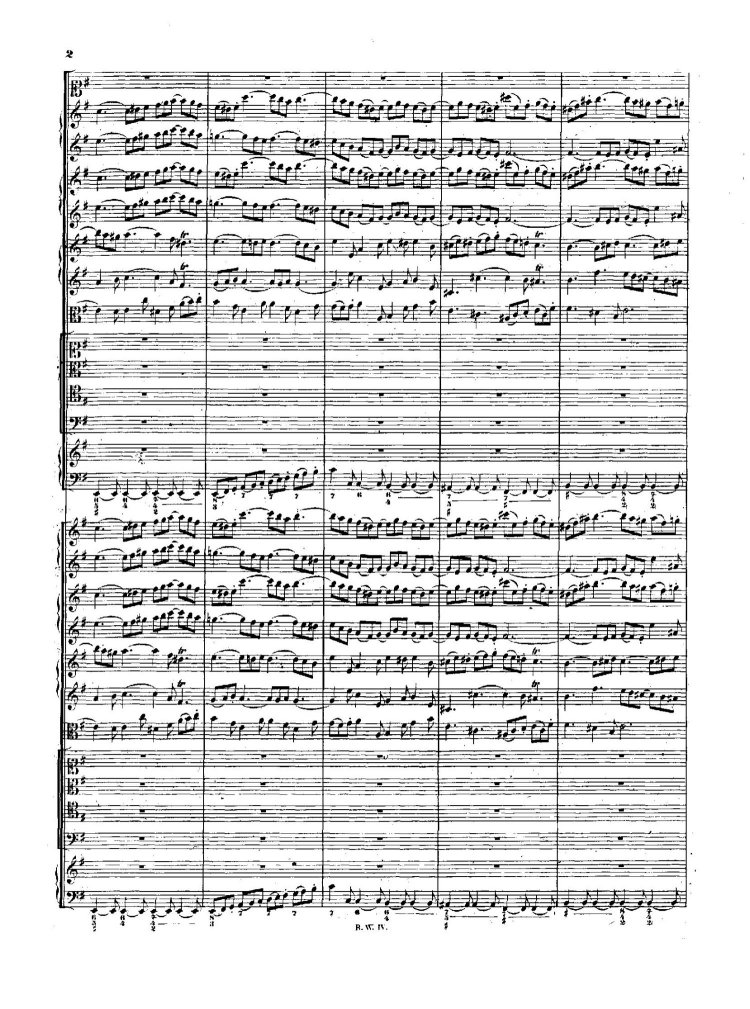
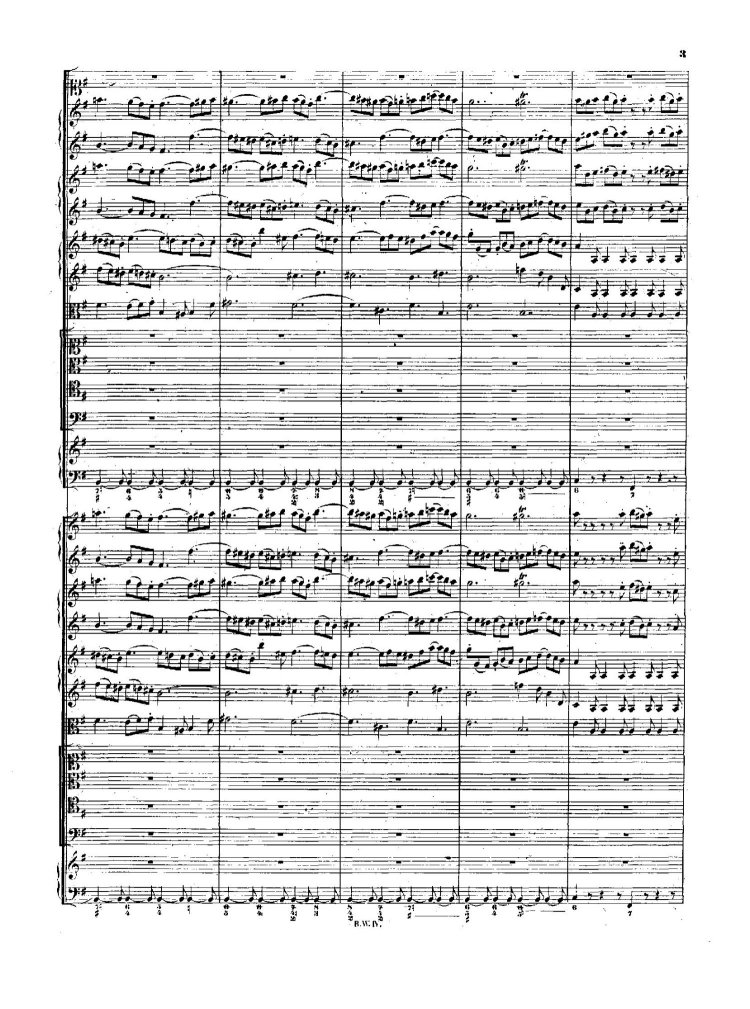
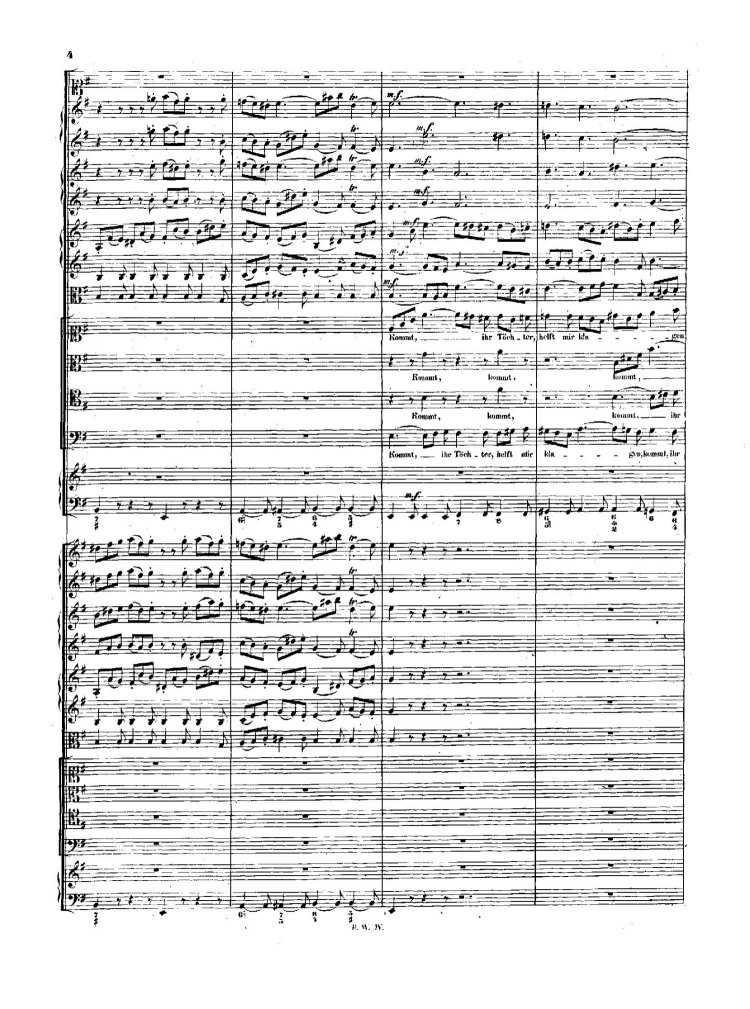 |
|
Original source: Chorale, O Lamm Gottes, unschuldig, BWV 401
Ref: RE 165; Br 165; KE 185; Birnstiel 170; AmB 46II p.93, p.99, & p.142; Penzel 134; BGA 148; BC F162.1; CST 296 |
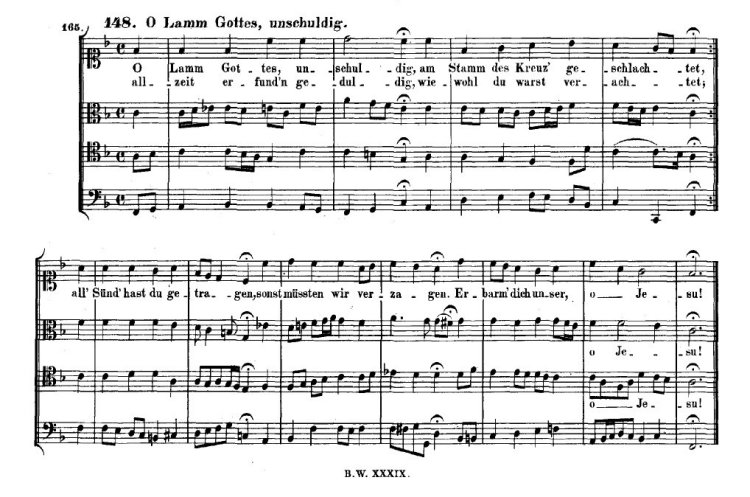 |
|
Untexted: |
|
Chorale Prelude O Lamm Gottes unschuldig (I), BWV 618 (Orgelbüclein) |
|
The movement is the first of the Passiontide Preludes in the Orgelbuchlein. The cantus is accompanied by a sequence of sobbing notes slurred in pairs. In Bach’s unvarying idiom they depict mental pain in contradistmction to the chromatic sequence by which he represents physical suffering. Bach’s melodic text conforms closely to Witt’s (No. 104). |
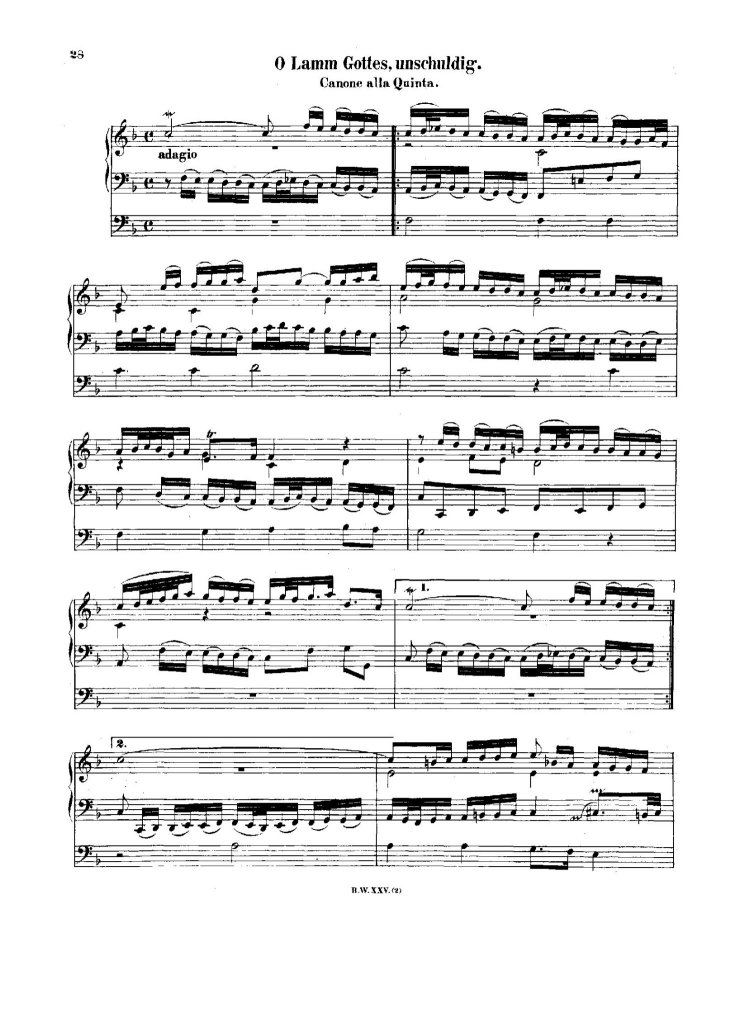
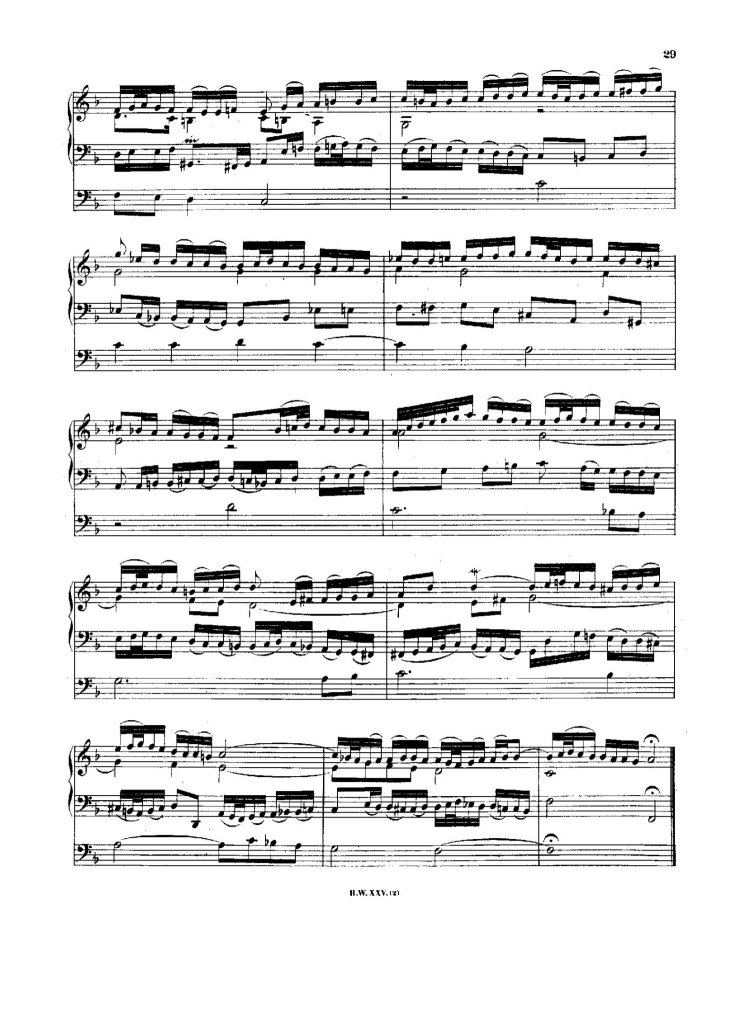 |
|
Chorale Prelude O Lamm Gottes unschuldig (V), BWV 1095 (Neumeister) |
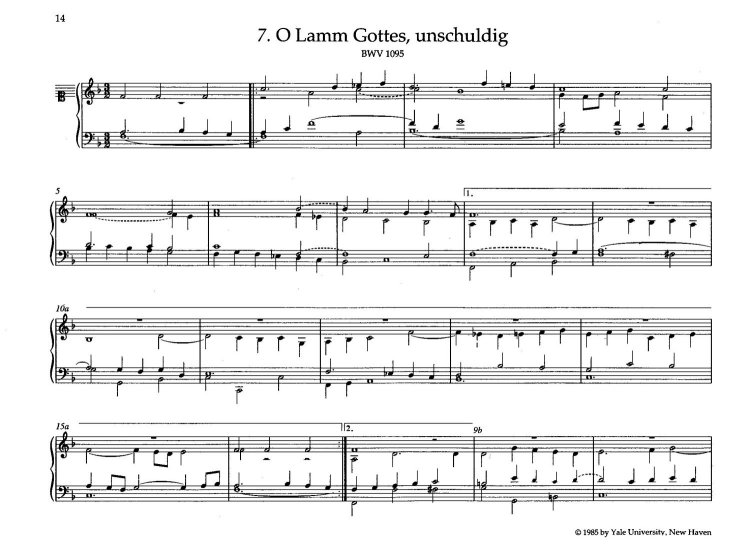
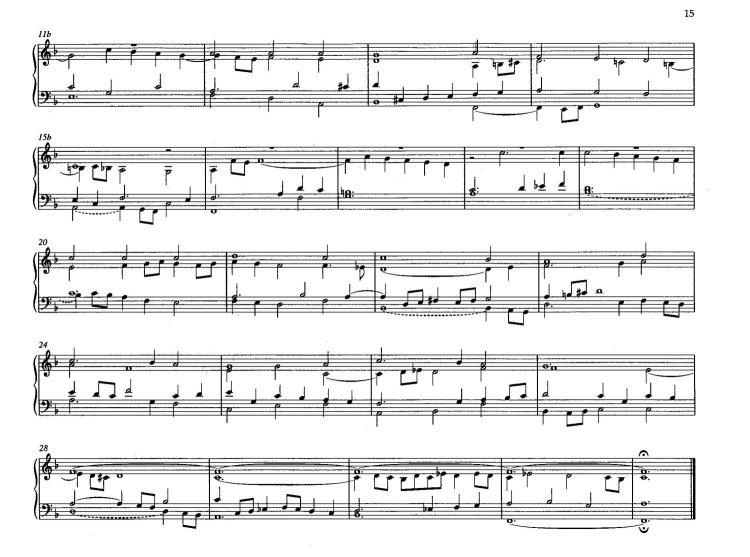 |
|
Melody 2: |
|
Untexted: |
|
Chorale Prelude O Lamm Gottes unschuldig (II), BWV 656 (Eighteen Chorales) |
|
Chorale Prelude O Lamm Gottes unschuldig (III), BWV 656a |
|
The Prelude, the sixth of the Eighteen Chorals, is a setting of the three stanzas of the hymn. In Verses 1 and 2 Bach does not attempt word painting. But at bar 19 (N. xvii. 37) of Verse 3, anticipating the melodic phrase of the line:
Our sins Thou bearest for us,
Bintroduces a subject clearly based on it: |
|

|
|
which, upon the entry of the cantus (N. xvii. 38, bar 4), accompanies it with increasing urgency of self-accusation until the words:
Else had despair reigned o’er us
are heard in the cantus (N. xvii. 38, bar 10). Chromatic sequences, entering at the 3/2 bar, express in poignant harmonies the agony of the Saviour’s death. With the entry of the last phrase of the cantus (N. xvii. 39, bar 1) and its petition:
Grant us Thy peace to-day, O Jesu!
the threnody is stilled, and undulating quaver sequences remind us, as Schweitzer comments1, of the angelic proclamation of “Peace on earth” in some of the Christmas Preludes. The final ascending cadence may be pictured as the Heavenward flight of the angelic messengers.
P. vii. 97 prints an older reading of the movement. The ms. of it is among the Krebs mss. |
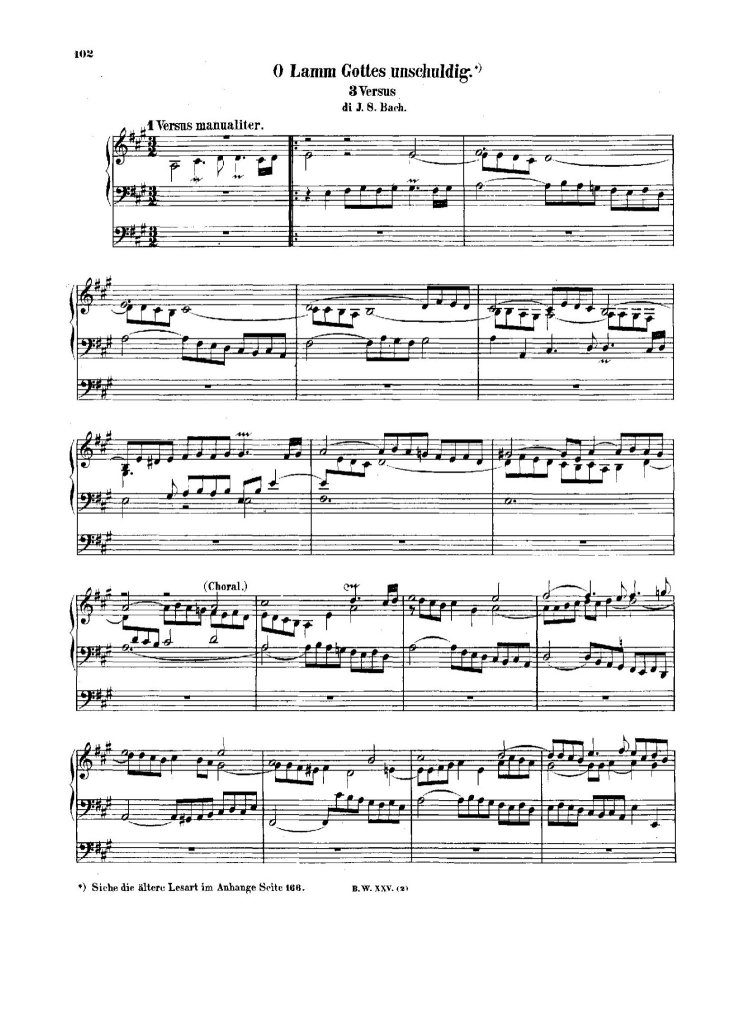
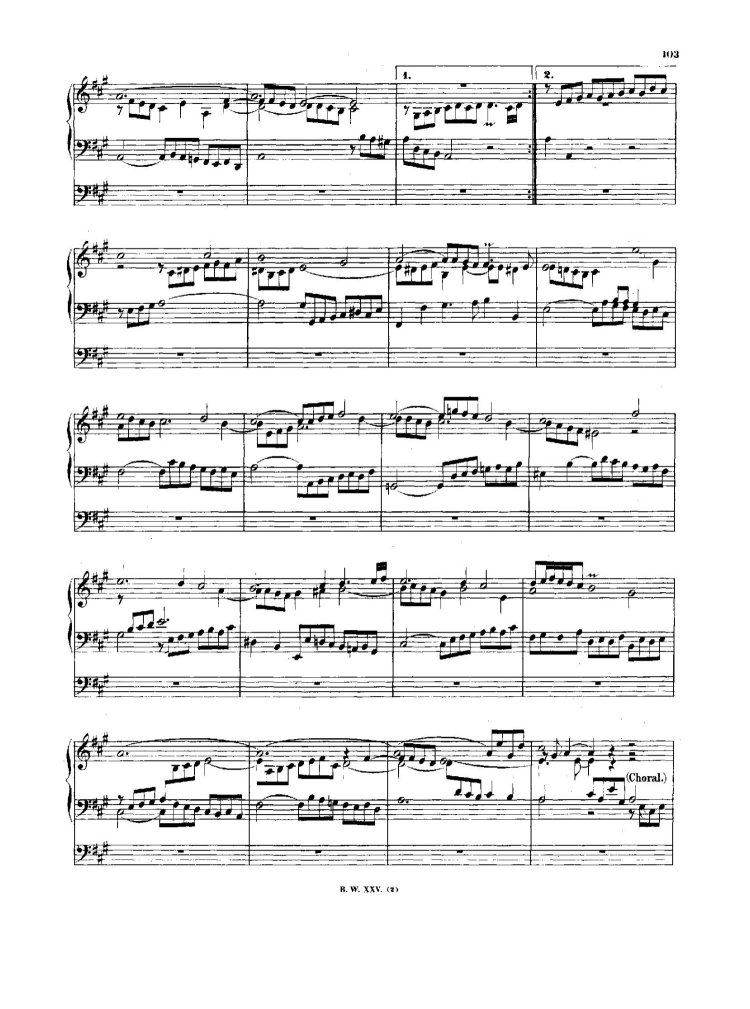
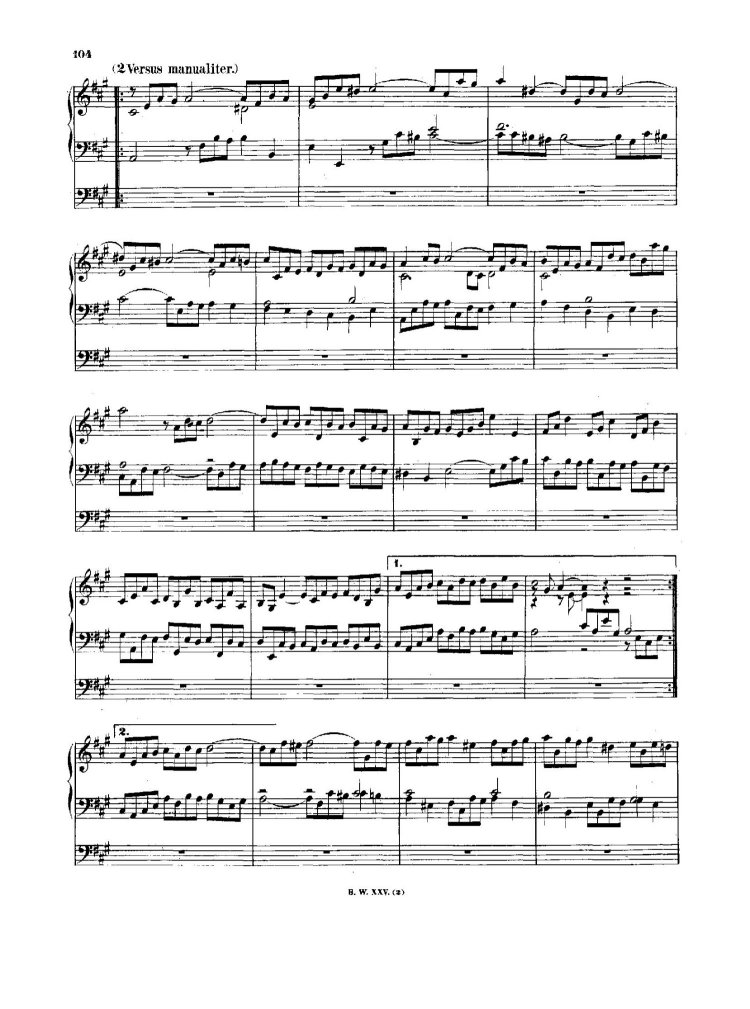
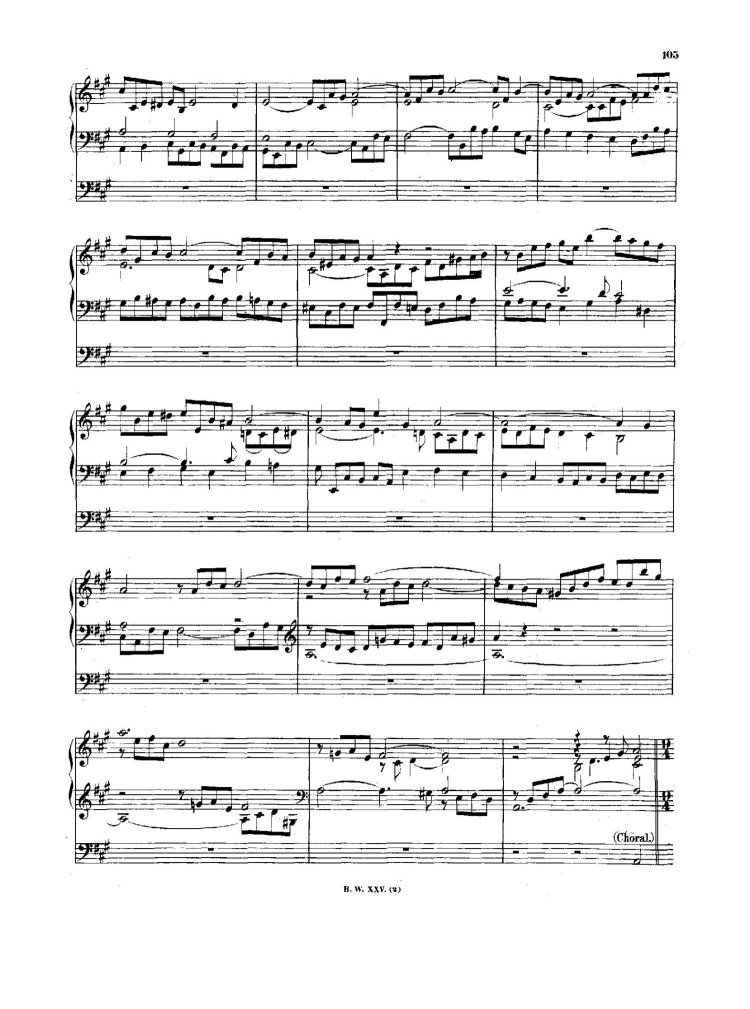 |
|
Chorale Prelude O Lamm Gottes, unschuldig (IV), BWV 1085
Chorale Prelude O Lamm Gottes, unschuldig (IV), BWV 1085a
Chorale Prelude O Lamm Gottes, unschuldig (IV), BWV 1085b |
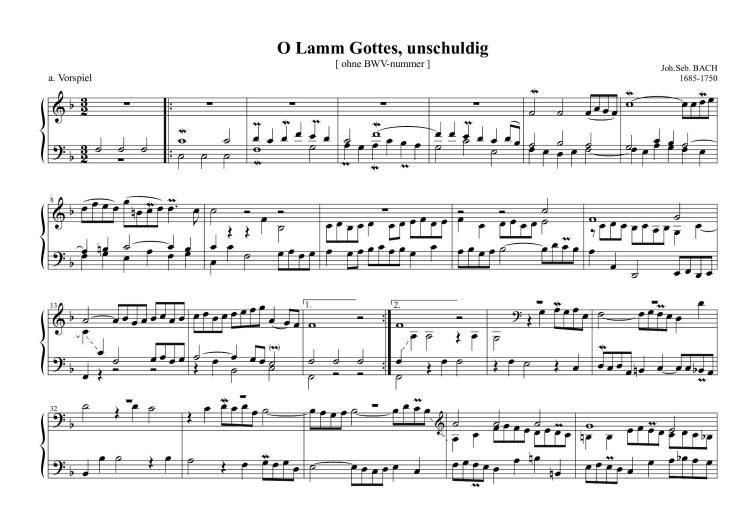
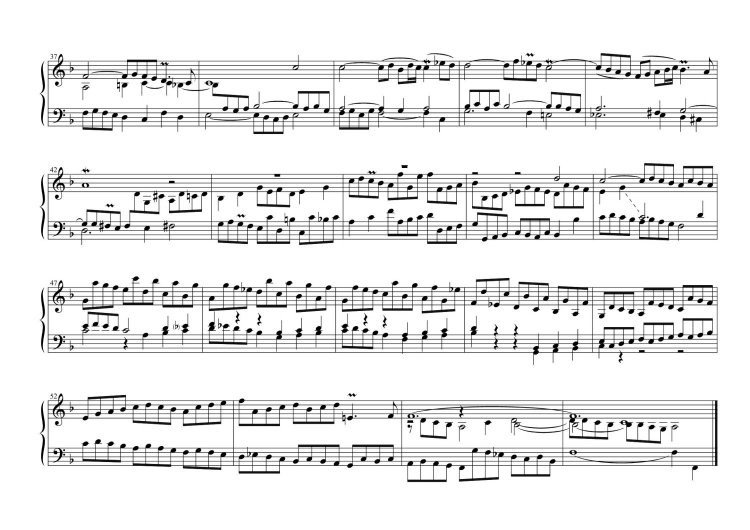
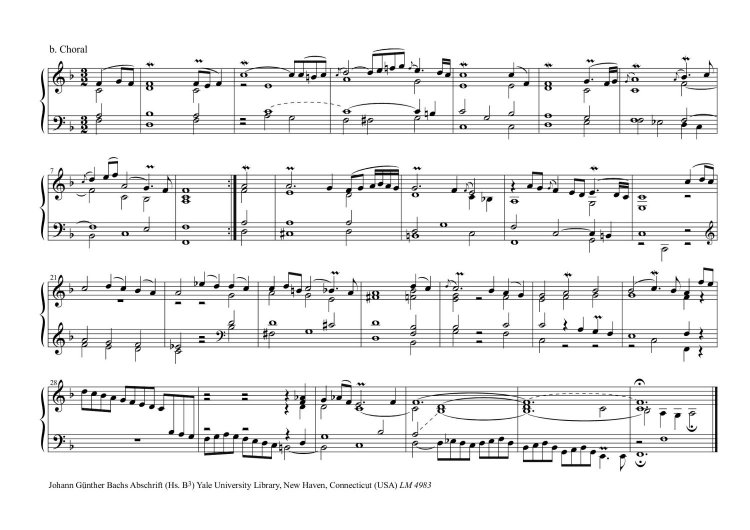 |
| |
| |
|
Use of the Chorale Melody by other composers: |
|
Max Reger composed a chorale prelude as No. 32 of his 52 Chorale Preludes, Op. 67 in 1902. Sigfrid Karg-Elert included a setting as No. 20 of his 66 Chorale improvisations for organ, published in 1909. |
| |
| |
|
Sources: Bach Digital; BGA; Zahn; BCML discussions on BCW; Charles Sanford Terry's Bach Chorals books
Photos from Gottfried Vopelius: Neu Leipziger Gesangbuch (Vopelius 1682) & Christian Friedrich Witt: Psalmodia Sacra, Oder: Andächtige und schöne Gesänge… (Gotha Hymnal, 1715), were taken from digital copies of the books downloaded from Bayerische Staatsbibliothek München. These copies are Out of copyright - non commercial re-use (Europeana Rights).
Prepared by Aryeh Oron (October 2018) |